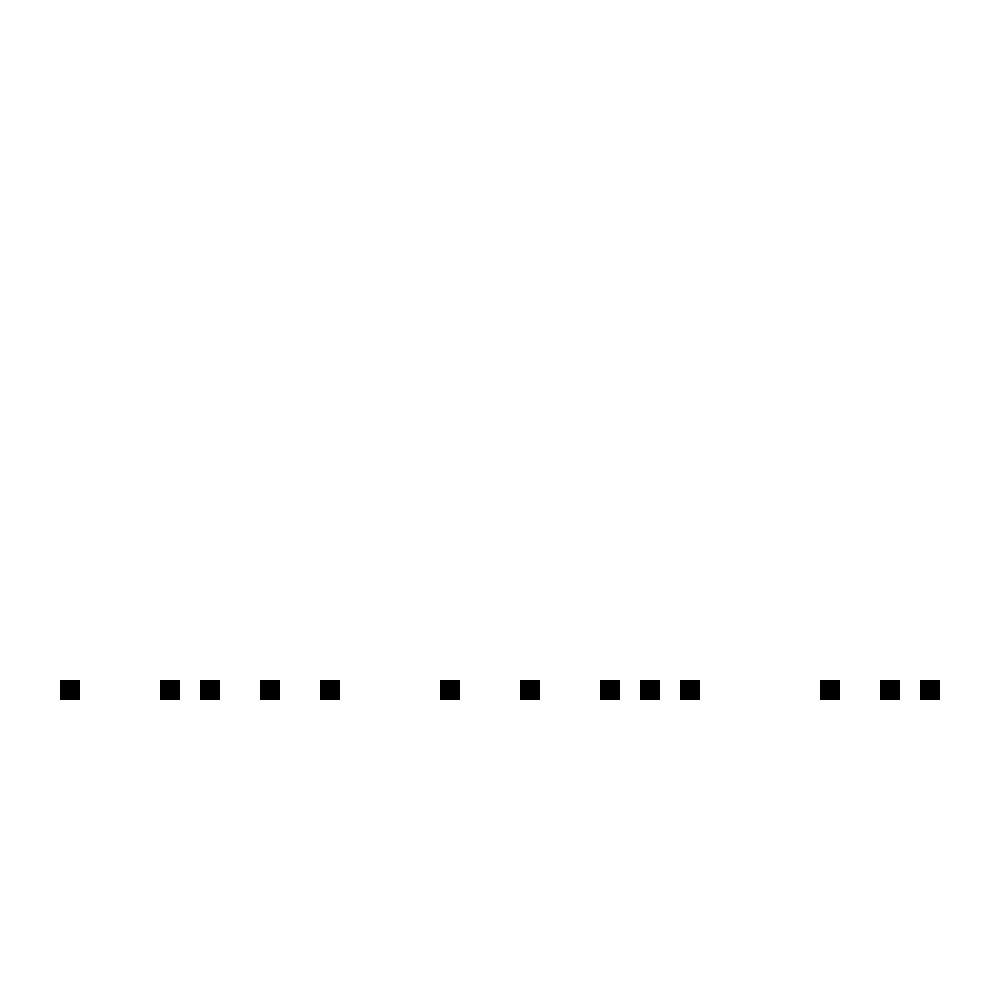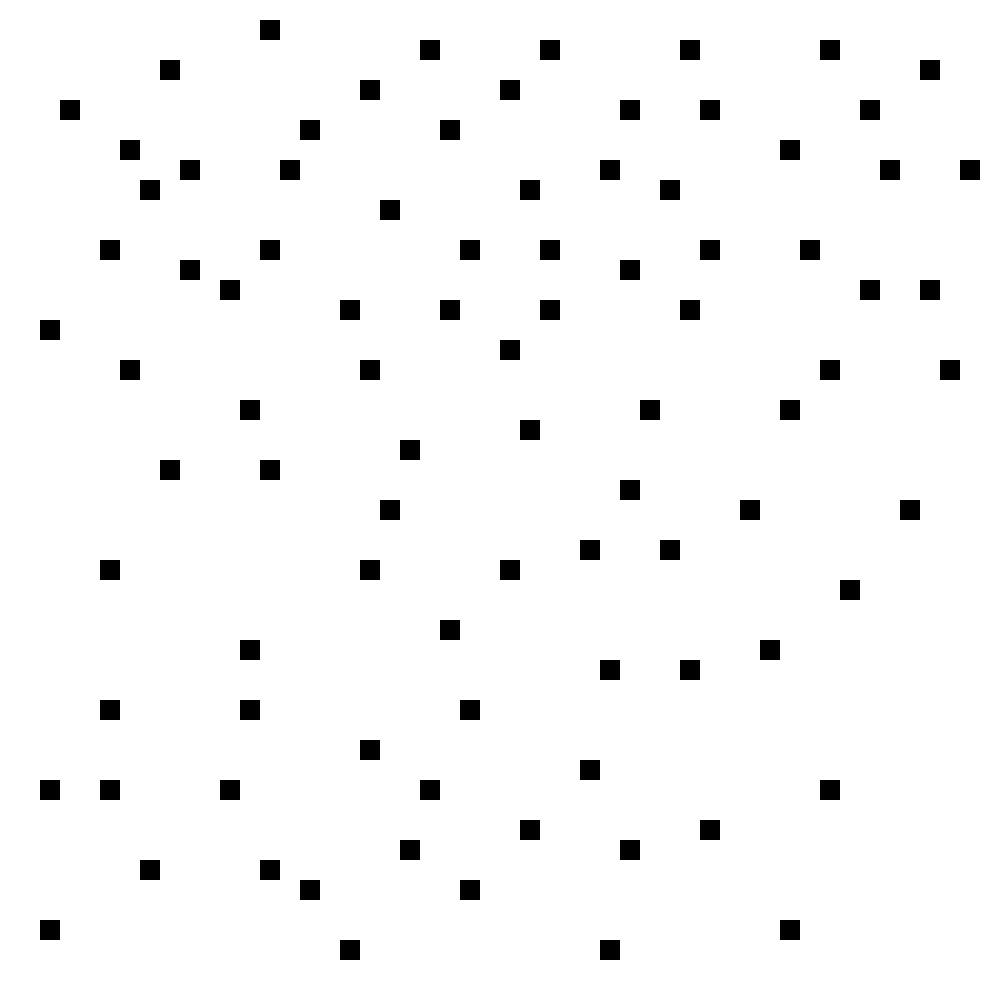Search: keyword:spectrum
|
|
| Displaying 21-29 of 29 results found.
|
( prev ) page 1 2 3
|
|
|
Sort:
id
Format:
long
Filter:
(all | no meta | meta)
Mode:
(words | no words)
|
|
|
|
|
|
| |
|
| BP869 |
| Approximately symmetric vs. asymmetric. |
|
| |
|
| |
| |
|
|
| |
|
| BP882 |
| Vaguely positive vs. vaguely negative |
|
| |
|
| |
| |
|
|
| |
|
| BP915 |
| Finite number of dots vs. infinite number of dots. |
|
| |
|
| |
| |
|
|
| |
|
| BP971 |
| Left half has more black (less white) than right half versus vice versa. |
|
| |
|
|
|
|
COMMENTS
|
A similar, but different, solution is "center of mass is on the left half vs. center of mass is on the right half." |
|
|
CROSSREFS
|
See BP972 for the version with examples rotated a quarter-turn.
Adjacent-numbered pages:
BP966 BP967 BP968 BP969 BP970 * BP972 BP973 BP974 BP975 BP976
|
|
|
KEYWORD
|
nice, precise, spectrum, dual, handed, leftright, rotate, boundingbox, blackwhite, traditional, viceversa, absoluteposition, bordercontent
|
|
|
AUTHOR
|
Aaron David Fairbanks
|
| |
|
|
| |
|
| BP972 |
| Top half has more black (less white) than bottom half versus vice versa. |
|
| |
|
|
|
|
COMMENTS
|
A similar, but different, solution is "center of mass is above the horizontal vs. center of mass is below the horizontal." |
|
|
CROSSREFS
|
See BP971 for the version with examples rotated a quarter-turn.
Adjacent-numbered pages:
BP967 BP968 BP969 BP970 BP971 * BP973 BP974 BP975 BP976 BP977
|
|
|
KEYWORD
|
precise, spectrum, dual, handed, updown, boundingbox, blackwhite, traditional, viceversa, absoluteposition, bordercontent
|
|
|
AUTHOR
|
Aaron David Fairbanks
|
| |
|
|
| |
|
| BP1044 |
| More black circles than white circles vs. at least as many white circles as black circles. |
|
| |
|
| |
| |
|
|
| |
|
| BP1046 |
| More white circles than black circles vs. at least as many black circles as white circles. |
|
| |
|
| |
| |
|
|
| |
|
| BP1208 |
| More triangles left than right vs. more triangles right than left. |
|
| |
|
| |
| |
|
|
| |
|
| BP1271 |
| Positive correlation vs. negative correlation. |
|
| ?
 | ?
 |
|
|
|
|
|
COMMENTS
|
All examples in this Bongard Problem are scatter plots. Each dot represents a data point.
"Positive correlation" means that when the X value increases, the Y value tends to increase as well (in the long run), while "negative correlation" means that when the X value increases, the Y value tends to decrease. |
|
|
CROSSREFS
|
Adjacent-numbered pages:
BP1266 BP1267 BP1268 BP1269 BP1270 * BP1272 BP1273 BP1274 BP1275 BP1276
|
|
|
EXAMPLE
|
Example TM4854 does not fit on either side because when the X value increases, the Y value stays the same.
Example TM4855 does not fit on either side because there is no correlation. |
|
|
KEYWORD
|
fuzzy, minimal, unwordable, teach, spectrum, dual, handed, leftright, updown, rotate, stable, hardsort, left-narrow, right-narrow
|
|
|
AUTHOR
|
Ben
|
| |
|
|
Welcome |
Solve |
Browse |
Lookup |
Recent |
Links |
Register |
Contact
Contribute |
Keywords |
Concepts |
Worlds |
Ambiguities |
Transformations |
Invalid Problems |
Style Guide |
Goals |
Glossary
|
|
|
|
|
|
|
|
|